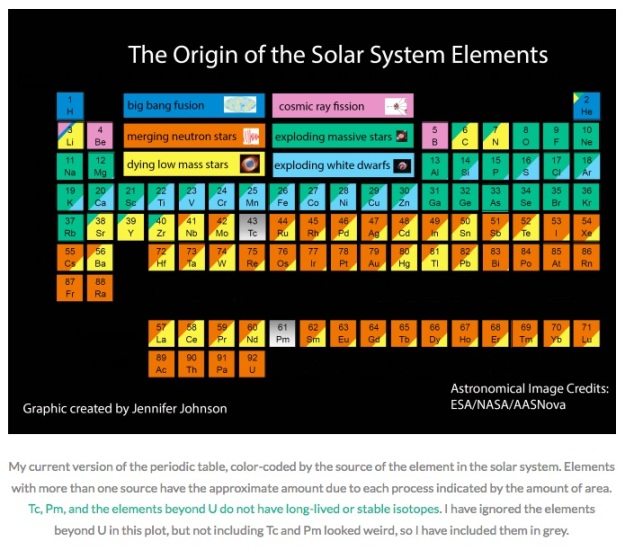Oxygen’s got a brand new pair of roller skates, hydrogen’s got a brand new key.
You can find romance if you want in the periodic table, with elements on the right side of the table, just an electron or two short of a full shell, cruising for partners over on the left side, with an electron or two to share. The folk-singing sisters Anne and Kate Macgarrigle made a song out of this, NaCl, about a love affair between a chlorine atom and a sodium atom. “Think of all the love you eat when you salt your meat.”
And living things are matchmakers, middlemen making a living by arranging liaisons between the two sides of the periodic table, harvesting the energy released by moving electrons around. The basic mechanism is shown below.

Take a reducing compound willing to give up an electron and an oxidant looking for an electron. Electrons go where they ain’t: starting on the left, electrons (e-) from the first compound pass through a series of protein complexes (grayish circles) embedded in a membrane (horizontal lines). The passage of electrons from one complex to the next in the membrane powers the movement of protons (H+) from one side of the membrane to the other. For each pair of electrons passing down the chain, ten protons are moved across the membrane. Finally the electrons are united with the oxidant (shown as O2 generating H2O). Electrons keep being pulled through the chain as long as reducing and oxidizing agents are available.
This is the first part the job. The result is a lot of extra protons on one side of the membrane and a large difference in electrical potential between the two sides. For the second part, another protein complex (ATP synthase) uses this potential difference to turn ADP (adenosine diphosphate) into ATP (adenosine triphosphate). ATP is the fundamental energy carrier of life, powering the cell’s chemical reactions when it turns back into ADP. (Creatine supplements work for athletes and bodybuilders because creatine helps with ATP synthesis.)
This is the basic mechanism of respiration (and most of photosynthesis), just as DNA replication is the basic mechanism of heredity. Understanding the origin of this mechanism is a major challenge in understanding the origin of life. Nick Lane walks through some of the theories.
Up this point in Earth’s history, living things are tiny and not very interesting structurally. But they are hugely diverse biochemically, making use of a great array of different reducing and oxidizing compounds. For example, methanogens use hydrogen seeping from undersea vents to reduce carbon dioxide, producing methane. This may have been of some importance to the planet as a whole. Methane is a greenhouse gas, trapping infrared radiation even more effectively than carbon dioxide. The Sun three billion years ago was fainter than it is today; it may be methanogens that kept a young Earth from freezing over.






